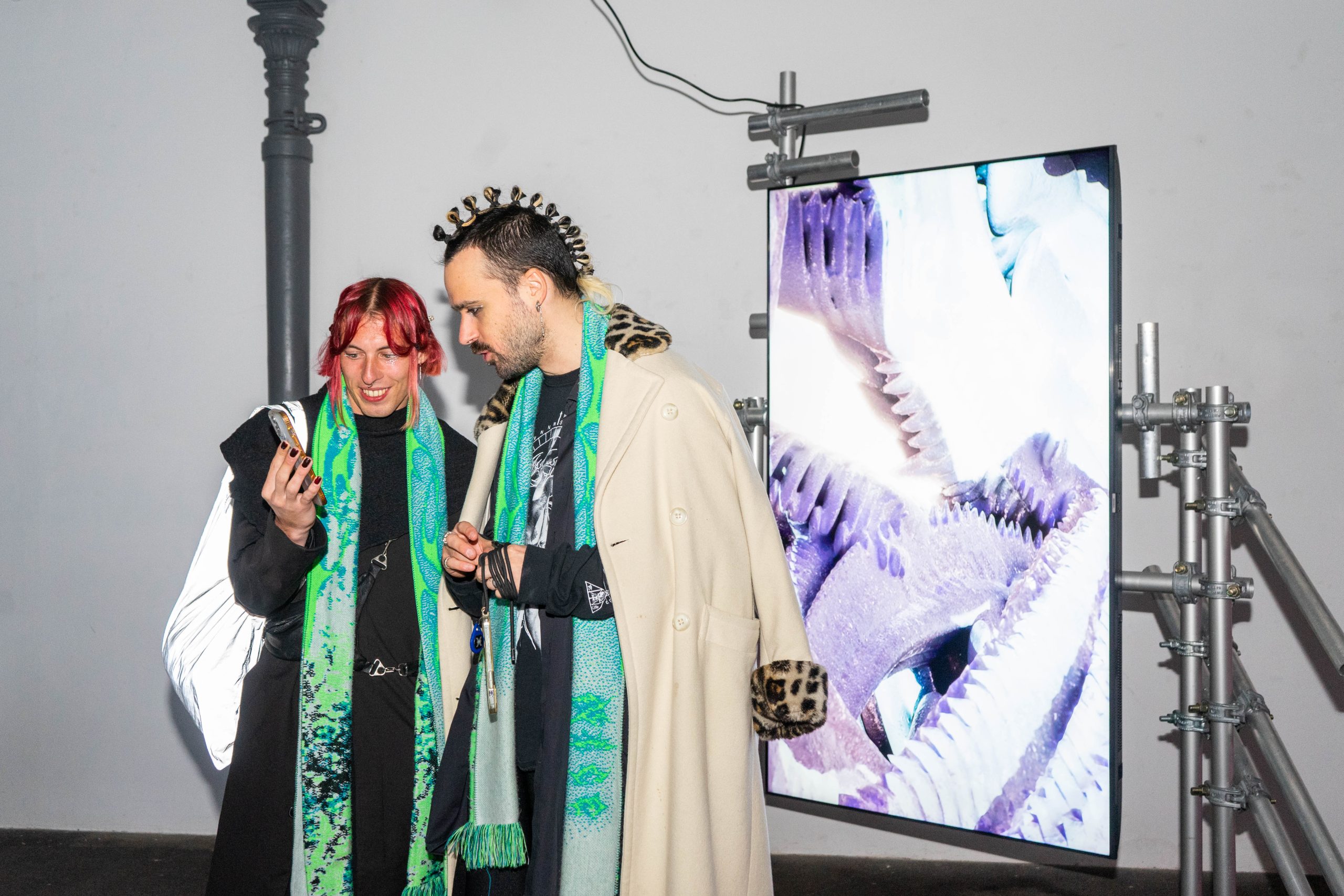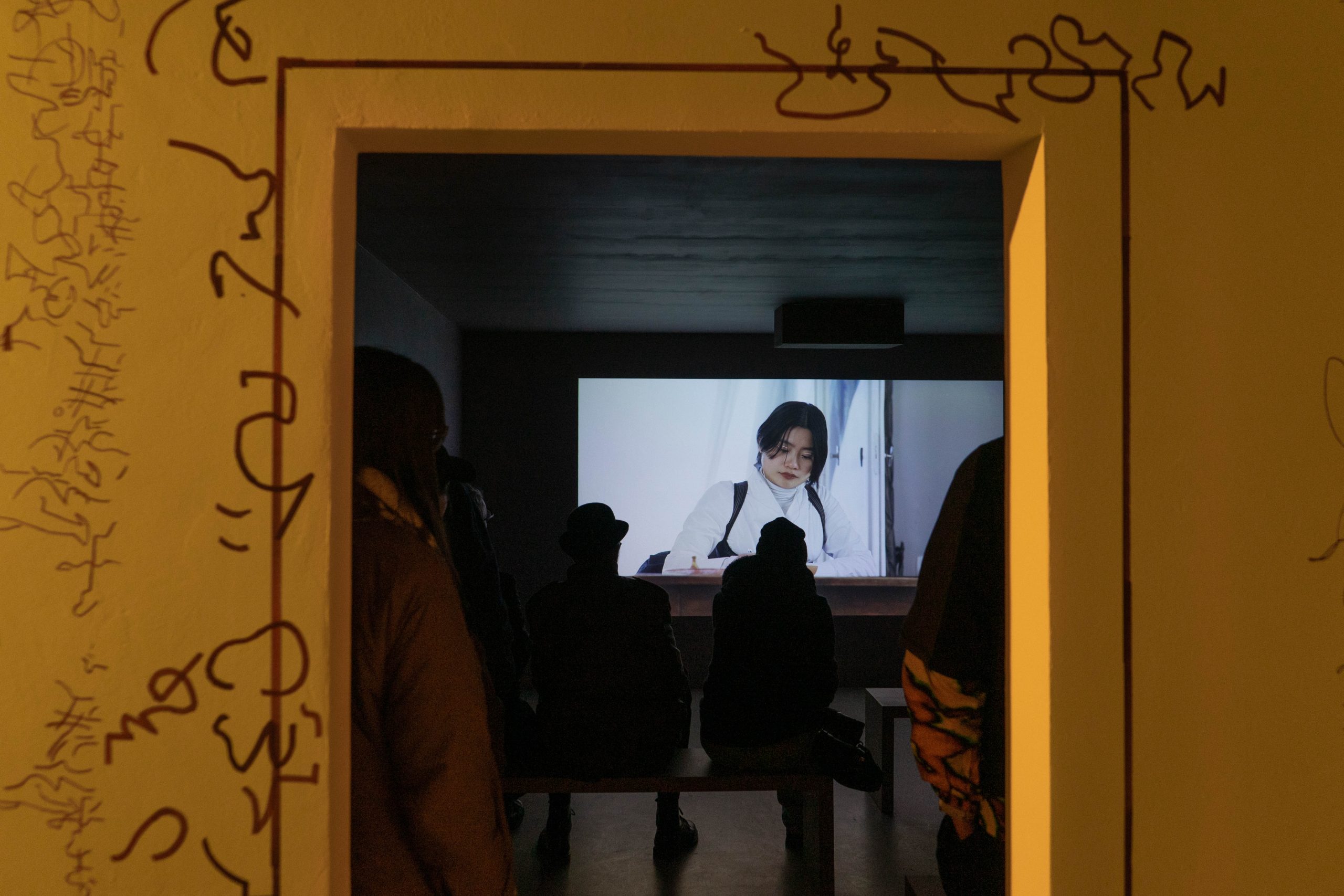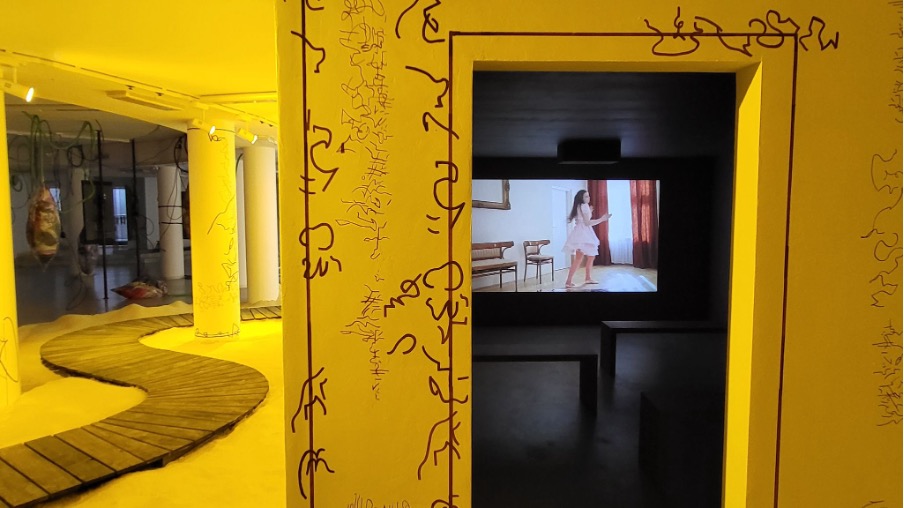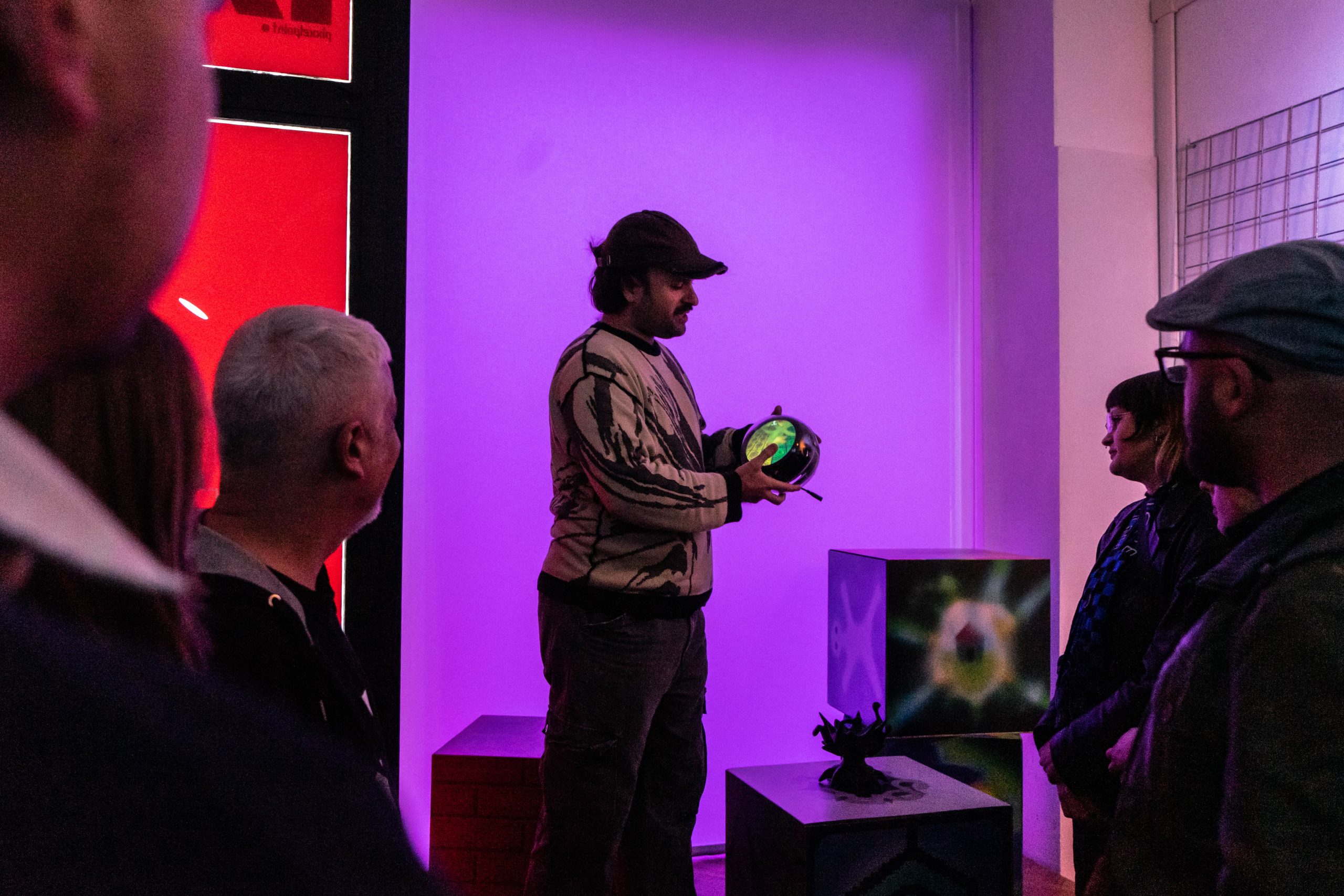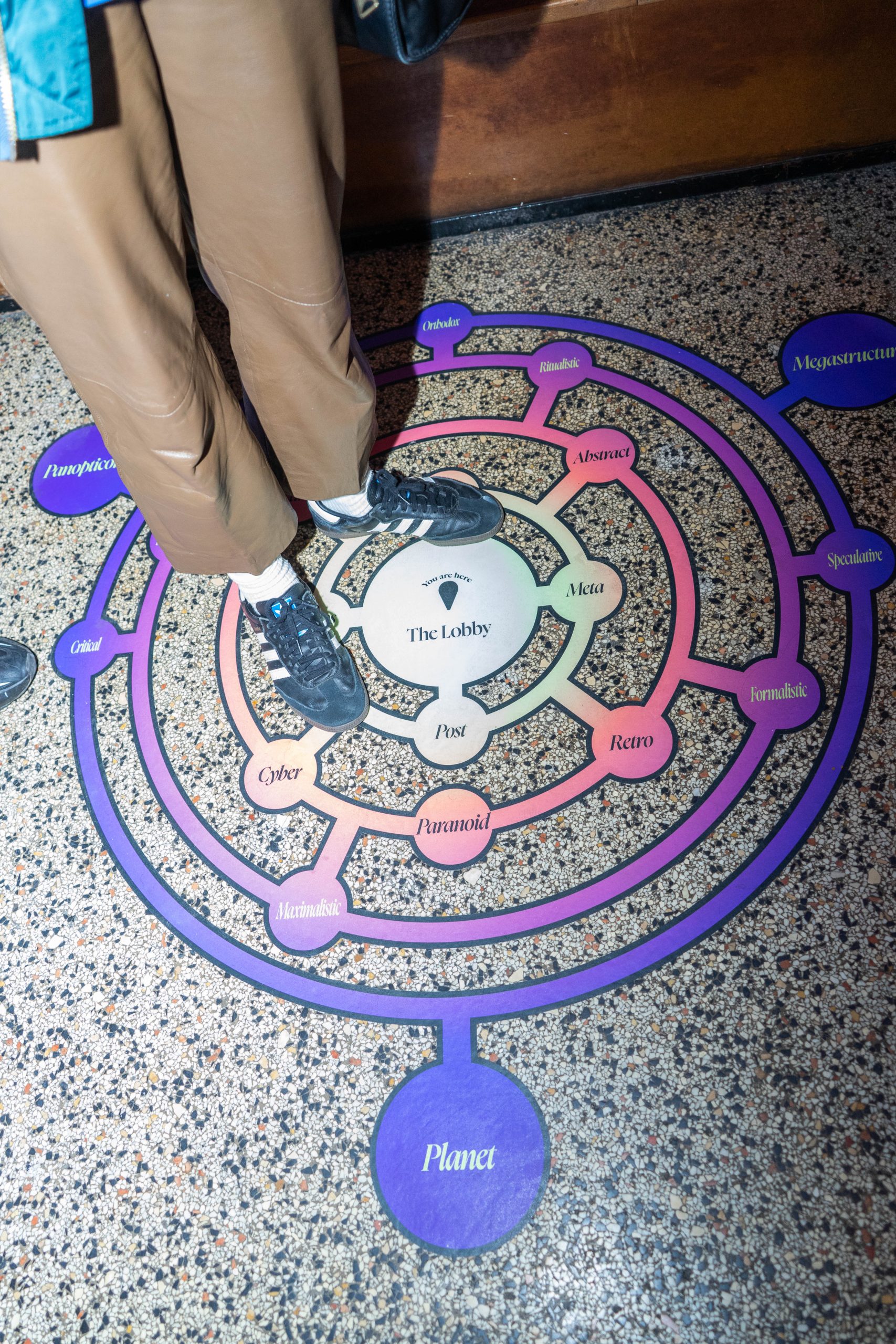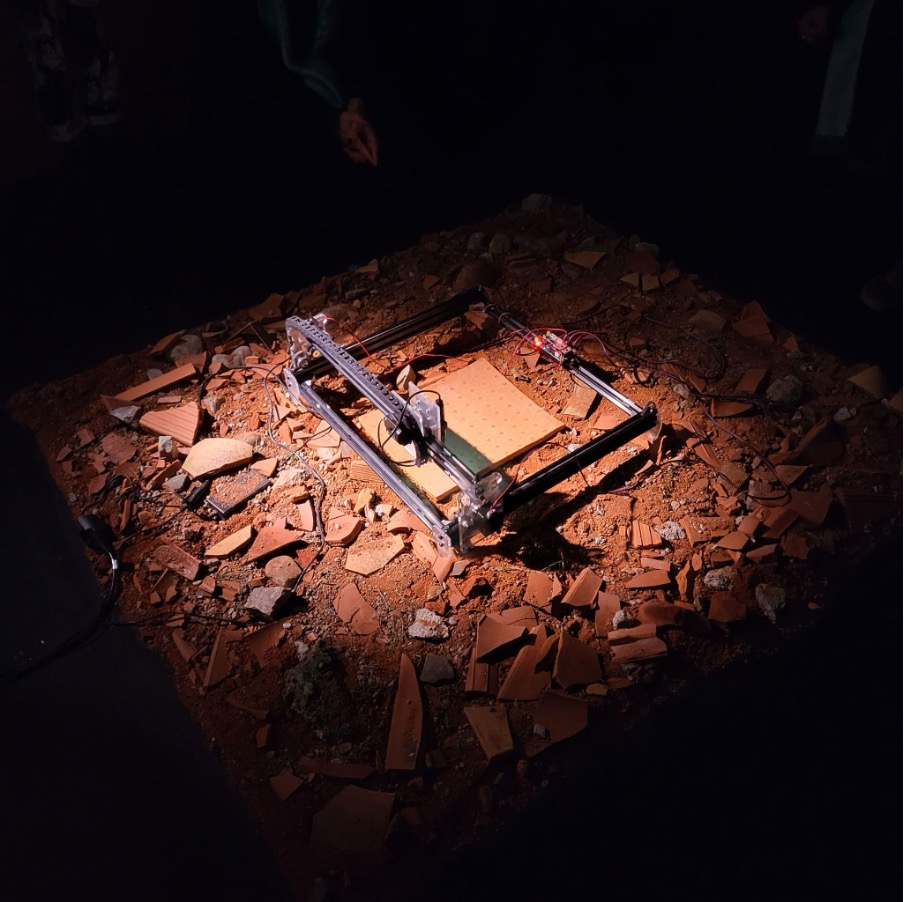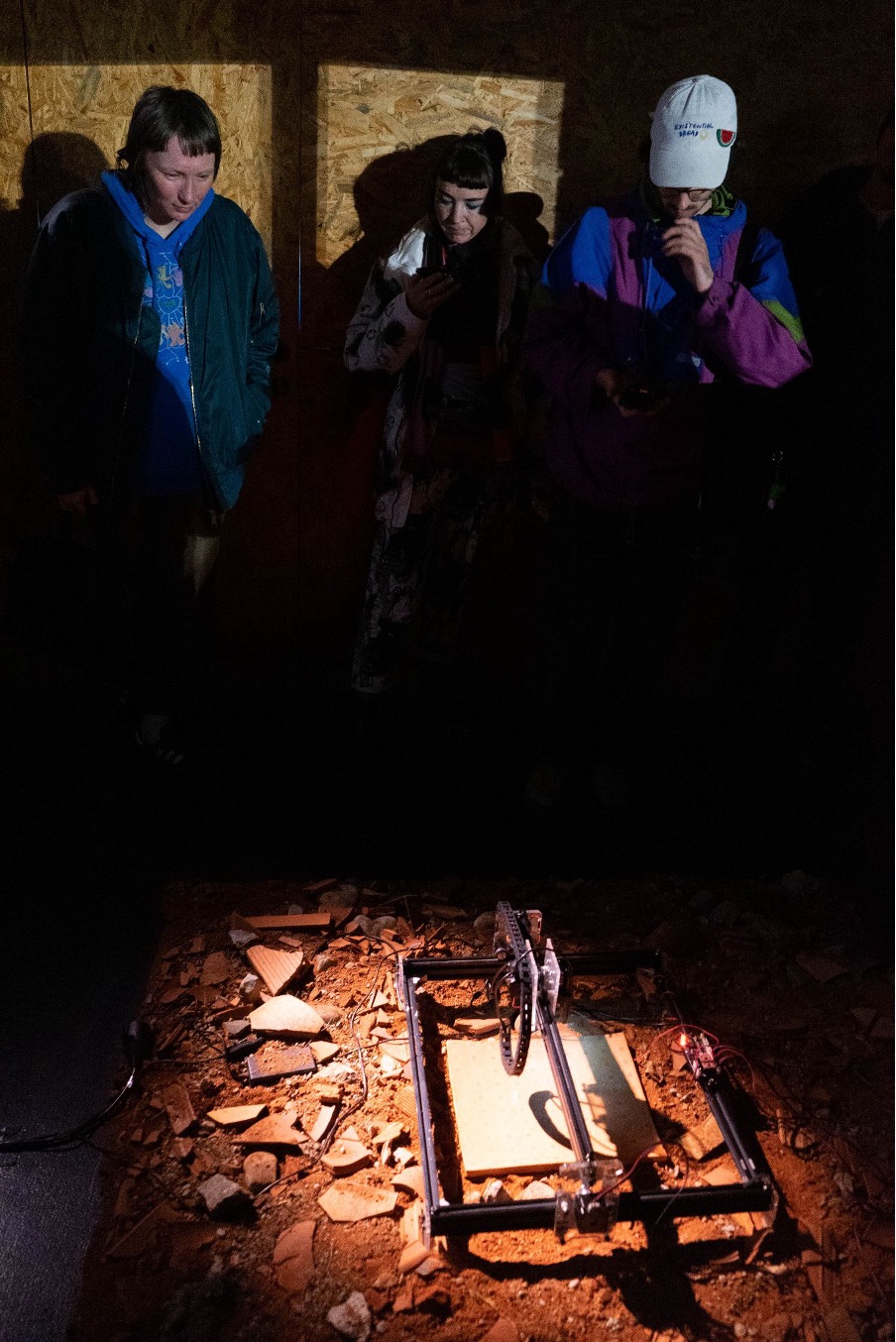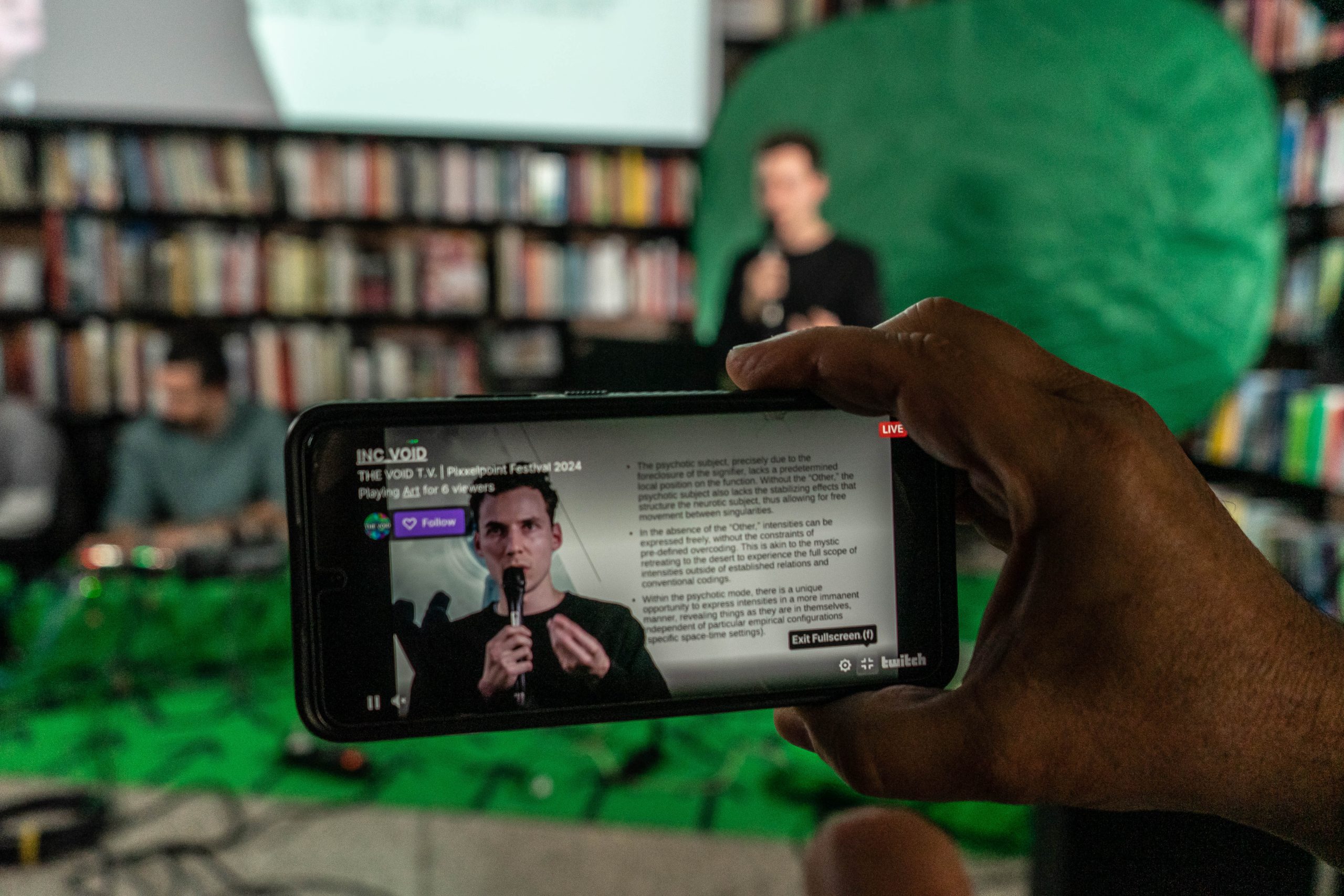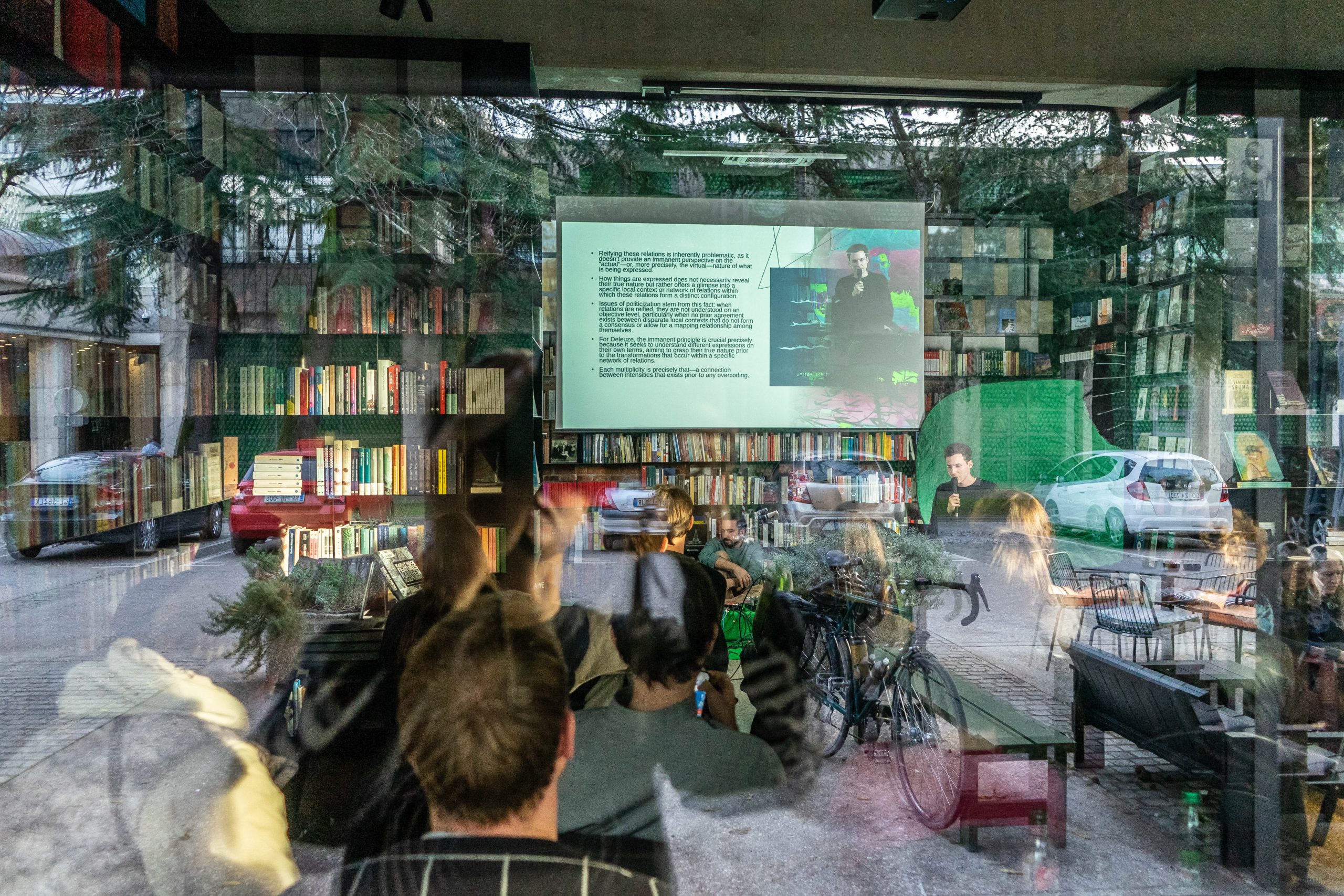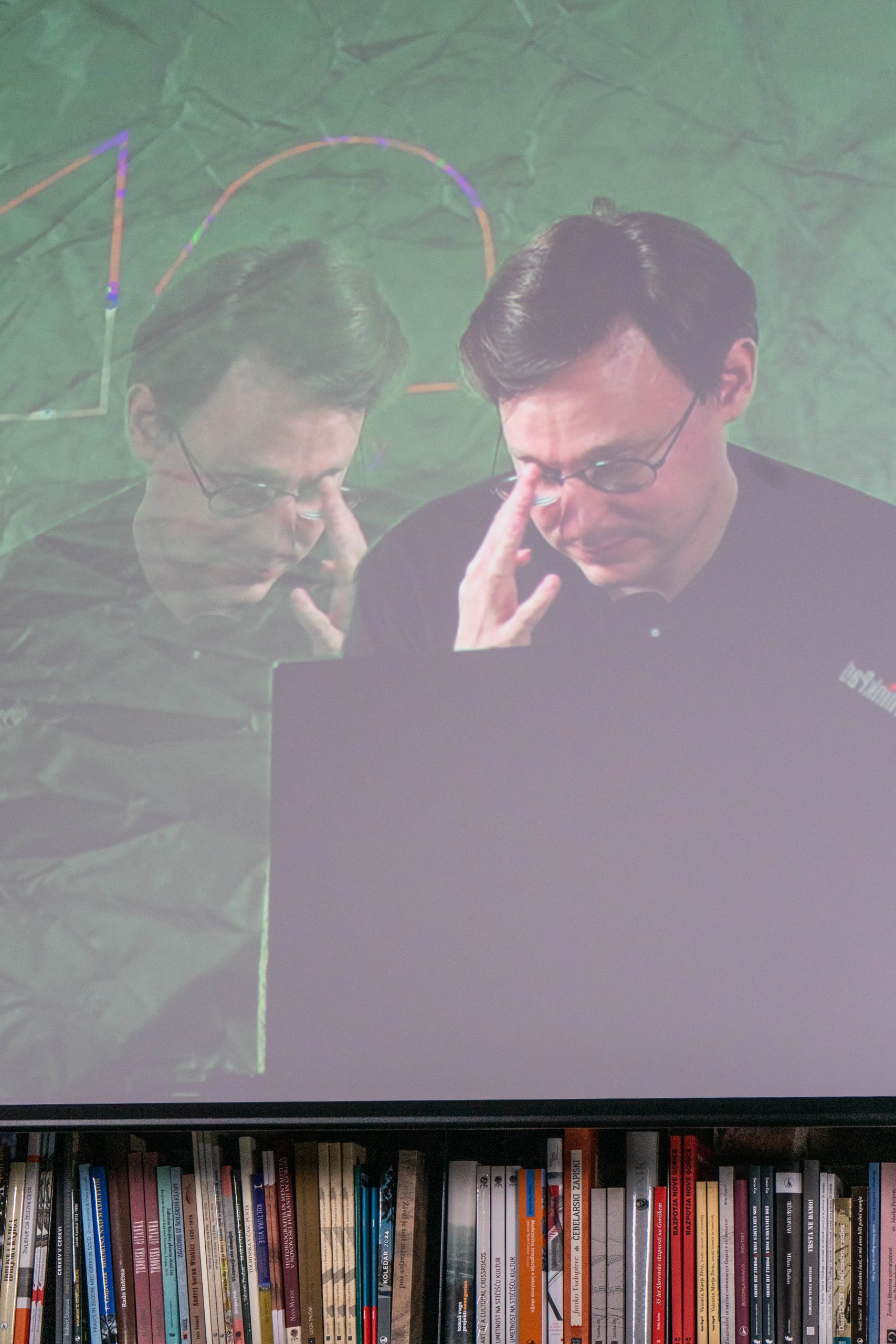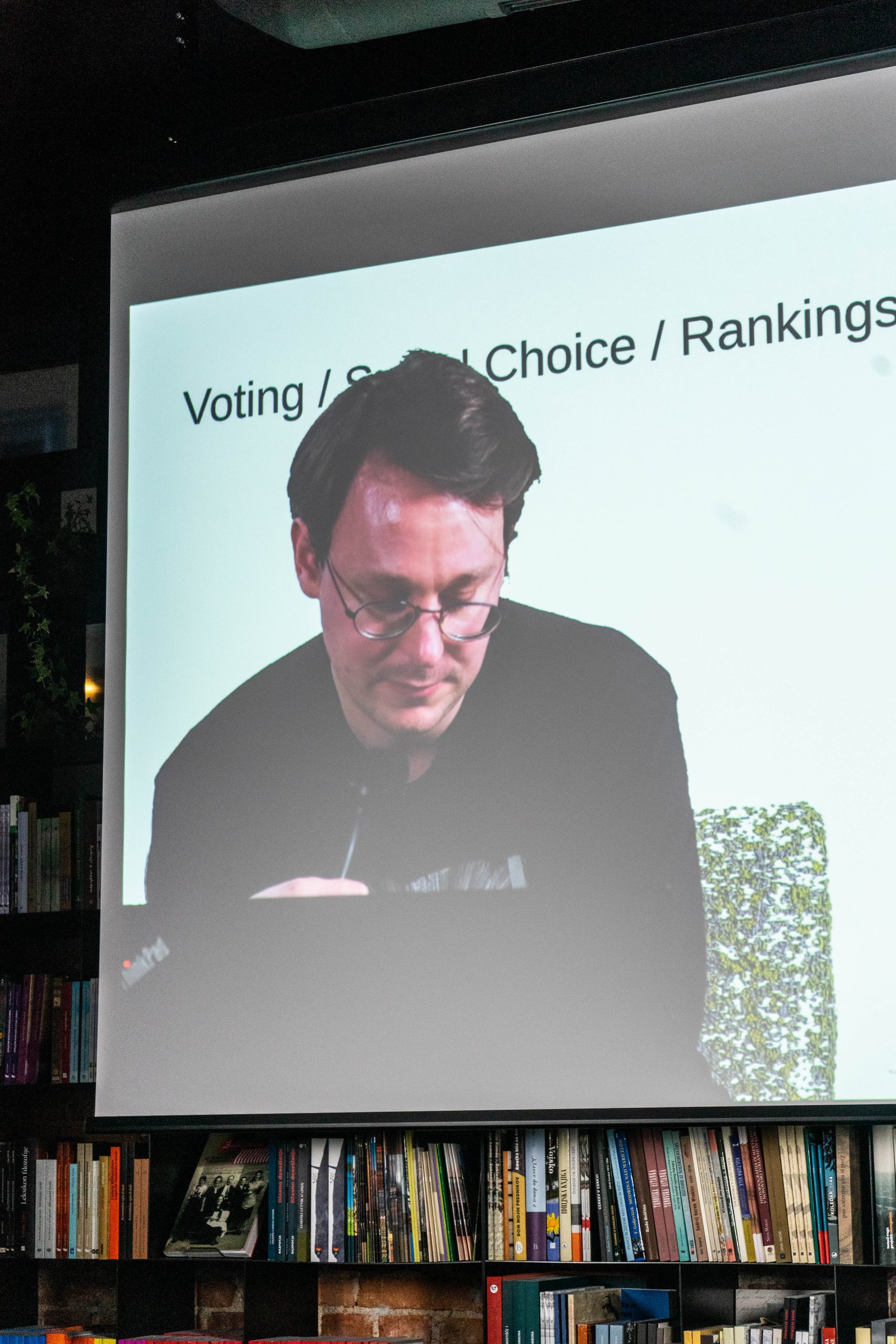This is a report and reflection on the 25th edition of Pixxelpoint international festival of contemporary art practices. The festival took place in Nova Gorica (SI) between 7-17 November 2024. Under the artistic direction of Janez Fakin Janša, this edition asks us to rethink the relation between our abilities to decipher limits of reality and the complex process of technological mediation. Through the main exhibition, curated by Maja Burja, titled Speculation and Decay and its accompanying discursive programme we were prompted to think about the tools that art and philosophy can offer us to intervene in the violent processes of extraction and exploitation of the material, synchronous with fragmentation and gentrification of the digital.
.・。.・゜✭・.・✫・゜・。.
The first part of Friday’s discursive programme Eroding Boundaries: Temporal and Spatial Decay in a World Beyond Repair, curated by Klara Debeljak and Dominik Vrabič Dežman, concentrated on our perception of both virtual and real spaces and practices of their augmentation at our disposal. The talk centered on works of collectives OMSK Social Club and Room69 with an interlude of a video piece by Vid Koprivšek. The focal point of the discussion was reality squatting – either squatting the digital world or reinterpreting how we interact with our everyday reality.
Room69’s lost to the digital ether is an installation that takes form through a non-intuitive semi-random placement of computer screens. In the middle lies a rat’s nest of computer cables bundled together for everyone to view. The exposed cabling and monitor arrangement somehow suggest an impression of something almost organic. The digital artifacts, slowly moving 3d models and alien landscapes are all actually tied to a specific location. Through the process of transforming a physical gallery space into a proxy the collective successfully hosted their entire exhibition inside the Google Maps app. With the use of the street view feature, anyone can access the works anytime, anywhere and take a stroll through the digital gallery.
Enlarge
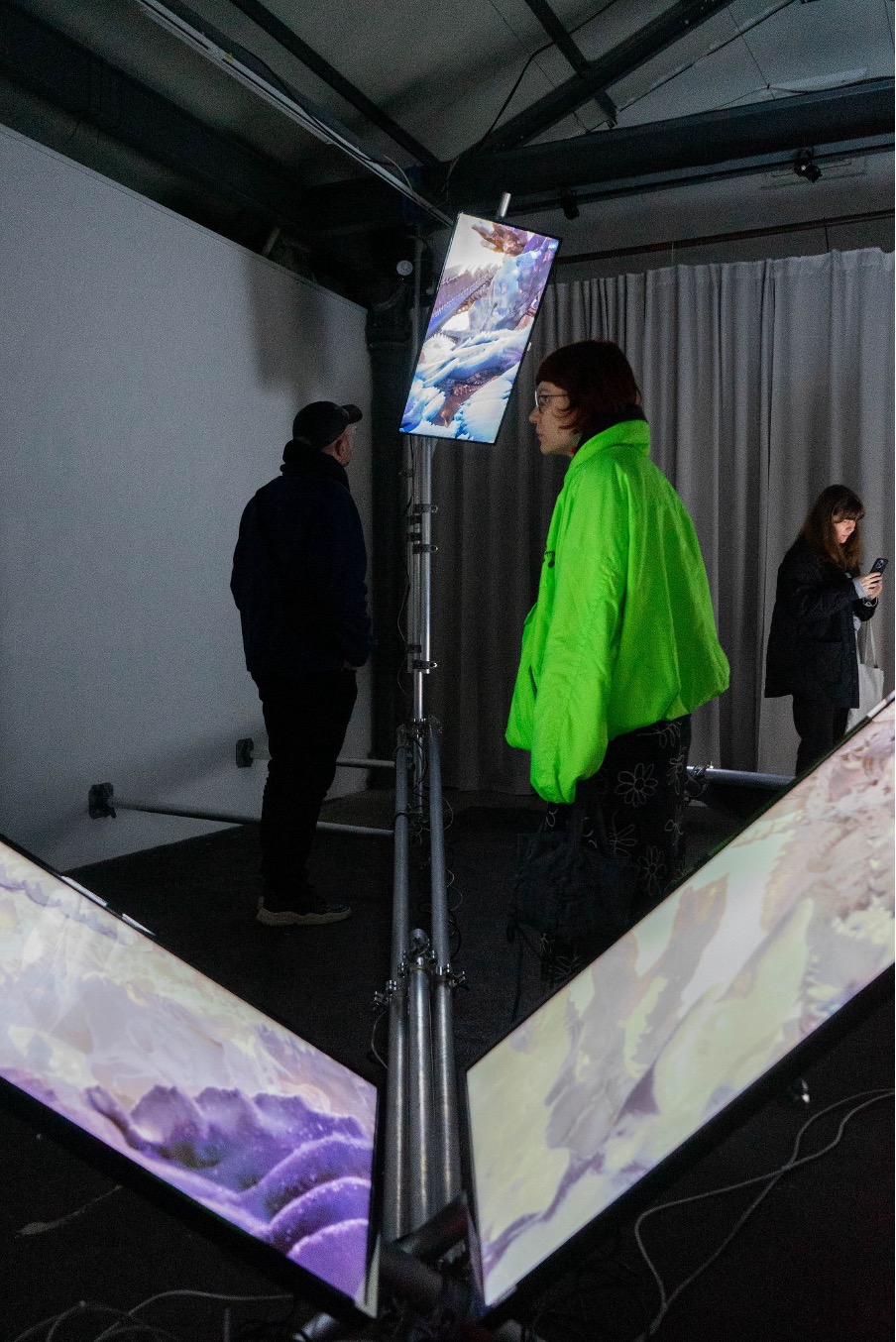
Room69, Lost to the Digital Ether. Photo: Urša Rahne / Aksioma.
Why is this sort of digital squatting important? If we were to believe the narrative that all of our communication, social interaction and lives will slowly migrate to the world wide web, then we should seriously consider which spaces we want to and which ones we are allowed to inhabit. The internet did not fulfill its promises of decentralizing power structures or building alternatives to real-world policies but instead only accelerated the capitalist extraction process.[1] The web is not even a place that marginalized communities with nowhere else to turn to could call home anymore. With the slow transfer from real-world practice to its digital counterpart the massive capital of sports betting as one example slowly gentrified the web and its content into something Max Read labeled the zynternet.[2] Catering to the most mainstream and broadly palatable is gradually pushing the spaces and communities that made the internet a unique place even further to its margins. That is why it is important to try to invent new ways to slow down or temporarily halt the process. Interventions such as this one show how, even though things are looking bleak, digital environments can be seen as places of liberation.[3]
This act of reappropriating Google’s interface also means a shift in the power dynamic. If the corporation has to all of a sudden host an art show, even unknowingly, it still operates as a rebellion against the owner structure of our internet experience. What is also important is that these digital spaces are not actually immaterial. The very real consequence of data storage, hosting, and content generation is pollution. Even initiatives and platforms like Digital commons, which critique this kind of web culture, run on the same hardware that is almost always unethically sourced and produced.[4] In the search for a replacement for our real-life spaces, we are simultaneously destroying them. At the same time, one of the most prominent strategies for solving Earth’s climate problem is computer climate simulations,
which have (at least for now) proven ineffective as our technological capabilities are stuck at the unpredictability of current climate conditions and lack of large-scale training data. Maybe a real step forward would be to channel that unpredictability and embrace it as a model of our planet.[5] What better way to plant the roots of such a project than reappropriating ubiquitous technology like Google Maps to squat and send a message?
₊‧.°.⋆✮⋆.°.‧‧.°.⋆✮⋆.°.‧₊
Swarm Entry is Vid Korprivšek’s installation that visualizes the workings of a vital bio-inspired computing algorithm called swarm intelligence. The algorithm is used to simulate the collective intelligence of a swarm, much like a colony of ants or a school of fish where each part of a collective thinks and acts on their own but together achieves something more than the sum of its parts.[6] The short video piece played between the program’s sections was a rendition of Koprivšek’s otherwise extended installation. Here interactivity is key as the biological aspects of the work are its inputs. A set of screens fusing with techno-organic matter displays the movement of a computer-simulated swarm reacting to the ambient presence of visitors such as their position in the room, ambient CO₂ levels, and temperature. Koprivšek thus not only demonstrates and explains a complex and important technological development in the history of computer science but also packages it in a work that deeply understands the importance of the symbiotic relationship between technology and nature.
:・゚✧:・゚✧:・゚✧:・゚✧
OMSK Social Club, on the other hand, don’t intend to squat virtual reality or the web but are content with establishing new relationships with what we perceive around us. Their contribution to the exhibition came in the form of a film projected in a custom-built theater hall reminiscent of a tomb. In order to get there we first had to take a twisting wooden boardwalk over indoor snow dunes. The film showcased their practice by documenting one of their play sessions. OMSK Social Club’s methodology or practice resembles participation in a Role-playing game (RPG), as players take on new roles through the guise of fantasy. An extension of this is Live-action role-playing (LARP), where the addition of live-action elements means players have to physically act out their intentions. OMSK’s contribution to these well-established formats is the Real Game Play (RGP) which focuses on even further expanding the realm of possibilities by enfolding the player’s own experiences and identity.[7]
Enlarge
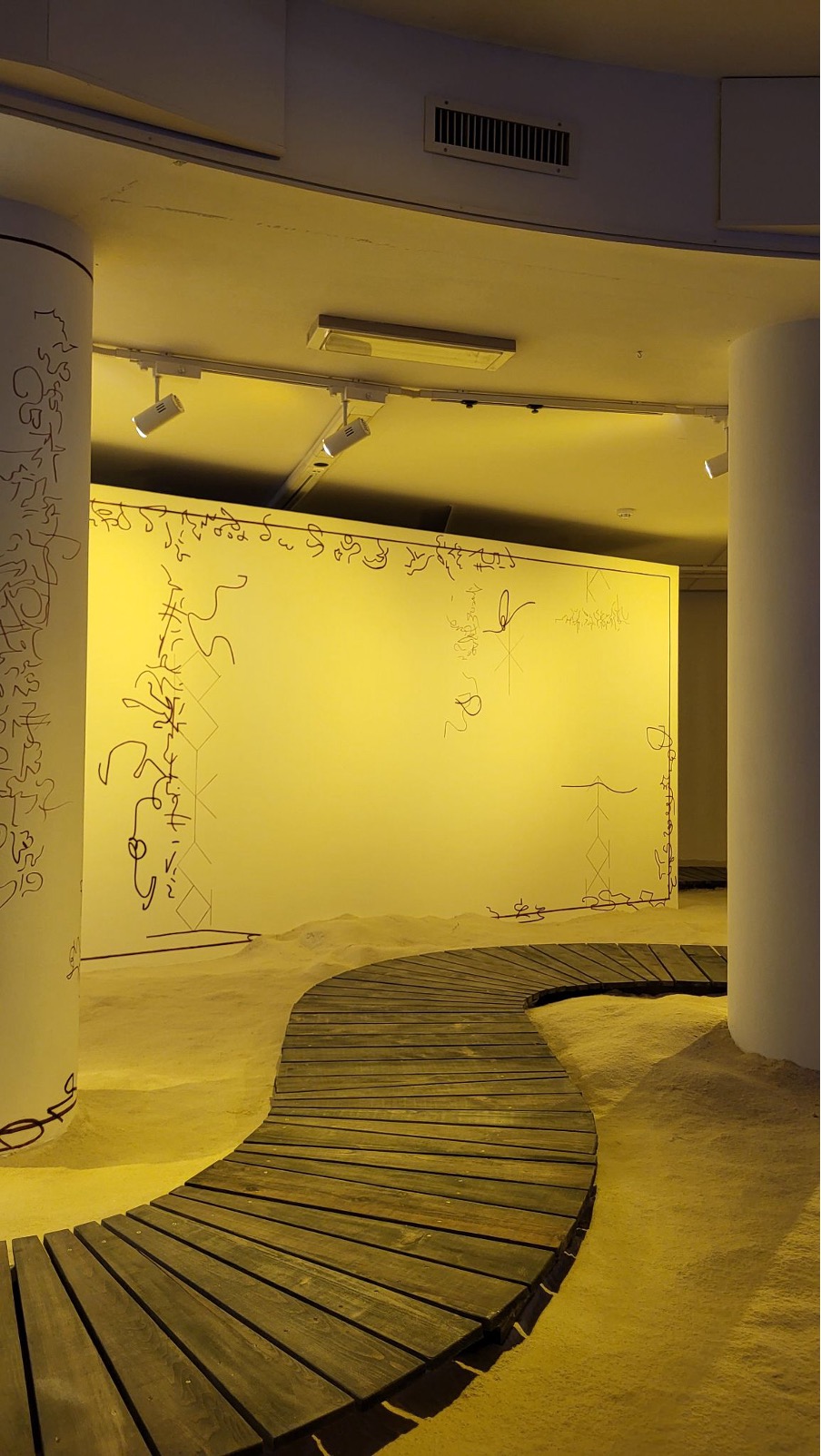
One of the key elements of role-playing is the threshold between the game and reality. Omsk Social Club are particularly interested in where these lines blur, materialized in the concept of bleedspace. We can define “bleedspace [as something that] refers to the blurring of boundaries between the in-game and the real world. It is a phenomenon that occurs when players become emotionally invested in the characters and events of the game causing their emotions to bleed into their real lives”.[8]
Reinterpreting or altering reality is something that fantasy enjoyers have been obsessed with for years but has recently become much more widely accepted and discussed, even in more mainstream gathering places like TikTok. The sudden popularisation of so-called reality-shifting techniques and plays on actuality may be a response to the alienation people feel from their own material realities as it becomes harder and harder to distinguish the fake from the real.[9] At the same time, it is a logical result of the lack of stable personal identity in a fragmented digital landscape. People seek out hyper-aestheticized, post-identity roleplay as a means to reestablish their own selves, and as an escape from omnipresent online politics. It is about morally detached self-exploration and self-understanding built on piles of niche lore.[10] If our reality is not what we wanted or imagined, maybe RGP can give us the tools to alter it.
₊‧☆.。.:・:✧:・.。.:☆‧₊
₊‧☆.。.:・:✧:・.。.:☆‧₊
After a short discontinuity in the form of a live set by musician msn gf, the second part of Eroding Boundaries: Temporal and Spatial Decay in a World Beyond Repair focused on the passage of time and examined works and practices of Alberto Harres and Dorijan Šiško with an intervention by Mario Santamaría. Each artist perceives time very differently in relation to their work, mediating it through their own unique interfaces.
The Core by Dorijan Šiško is a video game enclosed in a compact sphere, offered to us on a 3D printed stand, reminiscent of a crystal ball or some other magical artifact that we would encounter in a fantastical landscape. The game starts to be played the moment the orb is picked up, as the observer holds it in their hands and gazes at the circular display at its center. The player moves through the game’s virtual space by tilting the sphere from side to side, constantly adjusting their path. The input controls are captured by the gyroscope sensor in an off-the-shelf smartphone hidden inside the orb that also runs the game, displaying it on the custom screen. In the game, the player walks through a corridor or a series of rooms that change over time depending on which exit the player chooses. These choices are superimposed onto each other to create a final collage of images that the player has chosen throughout their journey. The series of individual choices dictate in which of the end states the player will conclude their exploration, each final state rewarding them with its own floating diorama.
Enlarge

Dorijan Šiško, The Core. Photo: Urša Rahne / Aksioma.
The work does not critically examine individual ideas but remains indifferent to them. It aesthetically generalizes and flattens particular political ideologies, which is not really a criticism but an acute reflection of the current online political landscape. The inability to imagine a future beyond the current political mainstream results in the fragmentation and polarization of online political discourse into smaller, often identity-relative, and sometimes ideologically paradoxical positions.[11] In this way, Šiško’s work mirrors the reality of today’s online political spaces, where ideologies and beliefs can be selected as if we were playing a game, wandering through different portals. Post Naive Ritualistic Orthodox Panopticum doesn’t sound that far from Post Civilisation Pan Anarchist Cyber Nihilist, one of the very real positions written by a member of Politigram.
Šiško also mentions that the game is a walking simulator, originally a derogatory term in gaming journalism targeting titles that were supposedly missing some expected features like combat or jumping but now its own genre with particular interests. The walking sim was conceived out of two incentives, on one hand as a call against total monetization of gaming as an art form, on the other as a push for more ambient, story and puzzle-driven games.[12] The first, an avant-garde countercultural attempt to produce outside the interests of the market, is where the real potential of gaming as a medium is channeled. Under this label of so-called countergaming the relationship between the player and the game is constantly being reworked and tested.[13] This is achieved either by taking away control, like the imprecise inputs of the orb, or by including visual artifacts that diminish the effects of representational modeling, like Šiško’s often masked, imprecise callbacks to internet culture, such as liminal lobby spaces or low poly assets covered with repeating pixelated textures.
In the past, The Core has also been presented in a different gallery context, next to a metaverse replica. I mention this because visitors at the exhibition could feel first-hand how empty, sterile and impersonal the space of the Metaverse is compared to the vibrant and idiosyncratic labyrinths we see in Šiško’s art project. If Mark Zuckerberg and his metaverse are the faces of the modern web, almost completely absorbed by capital and its advertising, then Šiško’s work is what reassures us, what gives us hope that the real folk web still exists and that the open internet, in one form or another, is still deeply loved.
⋆˚☆˖°⋆。° ✮˖ ࣪ ⊹⋆.˚
The talk was briefly interrupted by Mario Santamaría’s intervention, both an extension and a condensation of his exhibited work titled Visions from The Fall. He invited us to participate in a metaverse collective suicide, a joint eternal free fall. By purchasing the farthest possible plot in the metaverse and freefalling from it to infinity Santamaría is also displaying elements of counterplay, as the player can only observe the fall and watch the game slowly distort and break. The message in refusing to participate in a hollow and empty hyper-capitalist virtual society overrun with speculative investments and failed crypto projects is a clear one. But a free fall is also much more than that. It is something that exposes a blatantly vertical class structure, that makes us rethink the default perspectives we take or the ones imposed on us by the platforms we use. Hito Steyerl writes: “A fall toward objects without reservation, embracing a world of forces and matter, which lacks any original stability and sparks the sudden shock of the open: a freedom that is terrifying, utterly deterritorializing, and always already unknown. Falling means ruin and demise as well as love and abandon, passion and surrender, decline and catastrophe. Falling is corruption as well as liberation, a condition that turns people into things and vice versa. It takes place in an opening we could endure or enjoy, embrace or suffer, or simply accept as reality.”.[14]
。・:*:・゚★,。・:*:・゚☆
Arche-Scriptures by Alberto Harres is a work that sits exactly at the border between the cities of Nova Gorica in Slovenia and Gorizia in Italy. The head of a metal contraption resembling that of a 3D printer is carefully scanning obscure symbols engraved in a clay tablet. What resembles an excavation site is actually a practice of a computer reading and writing, a game of inputs and outputs that continually generates a border. It does that by reinterpreting the coordinates inscribed in hard soil and transforming them into marks on a Google Maps application. By constantly updating the map with newly read locations the border is never still, always shifting and consistently unfactual. The work is exploring numerous relevant fronts. It is an investigation of what a medium can handle, a demonstration of the disruptive power of the glitch, an application of deliberate misreading and a comment on state sovereignty and technology.
In terms of mediality, it works as a conversation between one of the oldest mediums of humankind – a clay tablet and modern mechanization and computation. If the content of one medium always consists of a preceding medium[15] then the piece exposes a whole range of technical progress. It also recalls the interplay of technics and language, which culminated in one of our most important technologies that kick-started rapid technological evolution – writing.[16] The project demonstrates the friction between the ancient way of inscribing symbols in a moldable object with writing and interpreting the complex world around us with machines by using code.
Enlarge
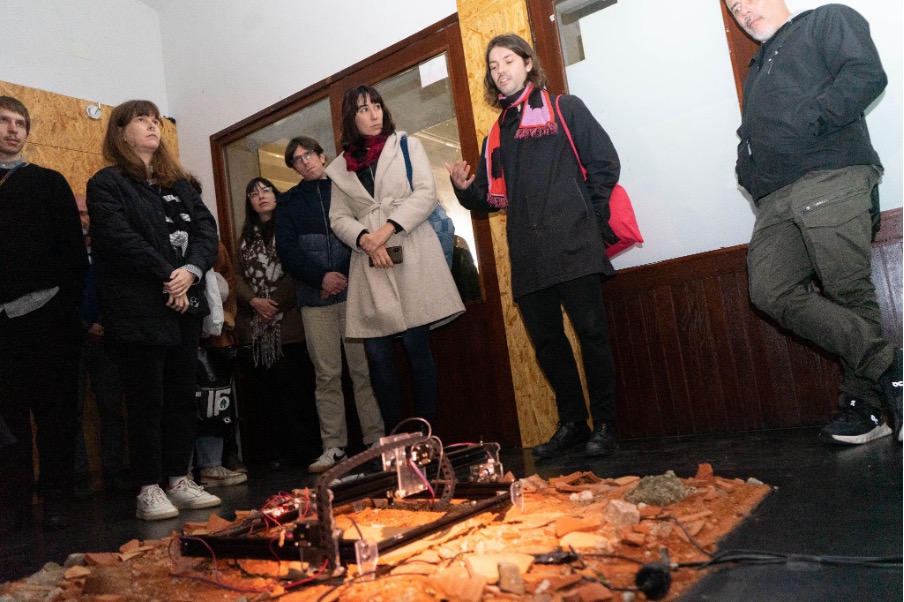
Alberto Harres, Arche-Scriptures. Photo: Urša Rahne / Aksioma.
Glitching has often been thought of as a productive break in form, as a tool that we can instrumentalize to crack open the imposed structures and achieve something we otherwise could not. It opens up a whole new range of possibilities, perspectives and possible futures.[17] This is where Harres mentions the concept of ancestral futurism – the stance that we should imagine futures from the standpoint of pre-colonized Indigenous communities. It poses the question of what the future could look like for the oppressed if they were not faced with these injustices and asks us to strive for that future. With regard to this work, the concept could be applied to the loose and poorly documented border between the two Gorizias – glitching could be what helps us fix or rethink historic injustices.
Most importantly, the work is about drawing border lines and separating different countries or states. New technology undeniably and utterly transformed the traditional Westphalian modes of political jurisdiction, territorialization and sovereignty. With the continuous extraction and abstraction of information, these state margins are as blurry as ever.[18] For example, what happens if the information of one sovereignty is hosted in another, who should be the owner, the one who created it or the one who is storing it?[19] What about the ones who take the Pay-to-in model, with citizenship for sale and tax deductions to spare, allowing a blatant economic metagame to prosper?[20] With constant errors in the system forcing the machine to fix and redraw the country border continuously, the work is challenging all of the above points. If technological progress is already overtaking our archaic views on state sovereignty, why not update them?
⁺˚⋆。°✩₊✩°。⋆˚⁺
The discursive program continued the next day with Maks Valenčič’s and Jan Kostanjevec’s lectures under the collective title Intensity and the Conditions of Expression. Both philosophers tried to define the borders of our conceptual systems in their own ways and gave a few perspectives and propositions on how we can think about challenging those thresholds.
Valenčič’s talk presented a continuation of his project dubbed Psychotic accelerationism, this time focusing on the Deleuzian concept of intensity. In this attempt to reinstall the accelerationist proposal from a new angle, he focused his analysis on the psychotic register. Instrumentalizing the psychotic’s unique position to channel desire or decipher the complex readings of intensities, we could unlock a new set of tools to psychoanalyze reality. If accelerationism has lost its radical charge in the process of crumbling into different derivations and fighting for the title of the true heir,[21] then psychotic accelerationism willingly disregards this, looks back and repackages what is useful. If we are trying to crack the code and play the perfect threshold-breaking hand, then the diagonalization of the existent accelerationist move set is what a future meta-move might look like.[22]
Enlarge
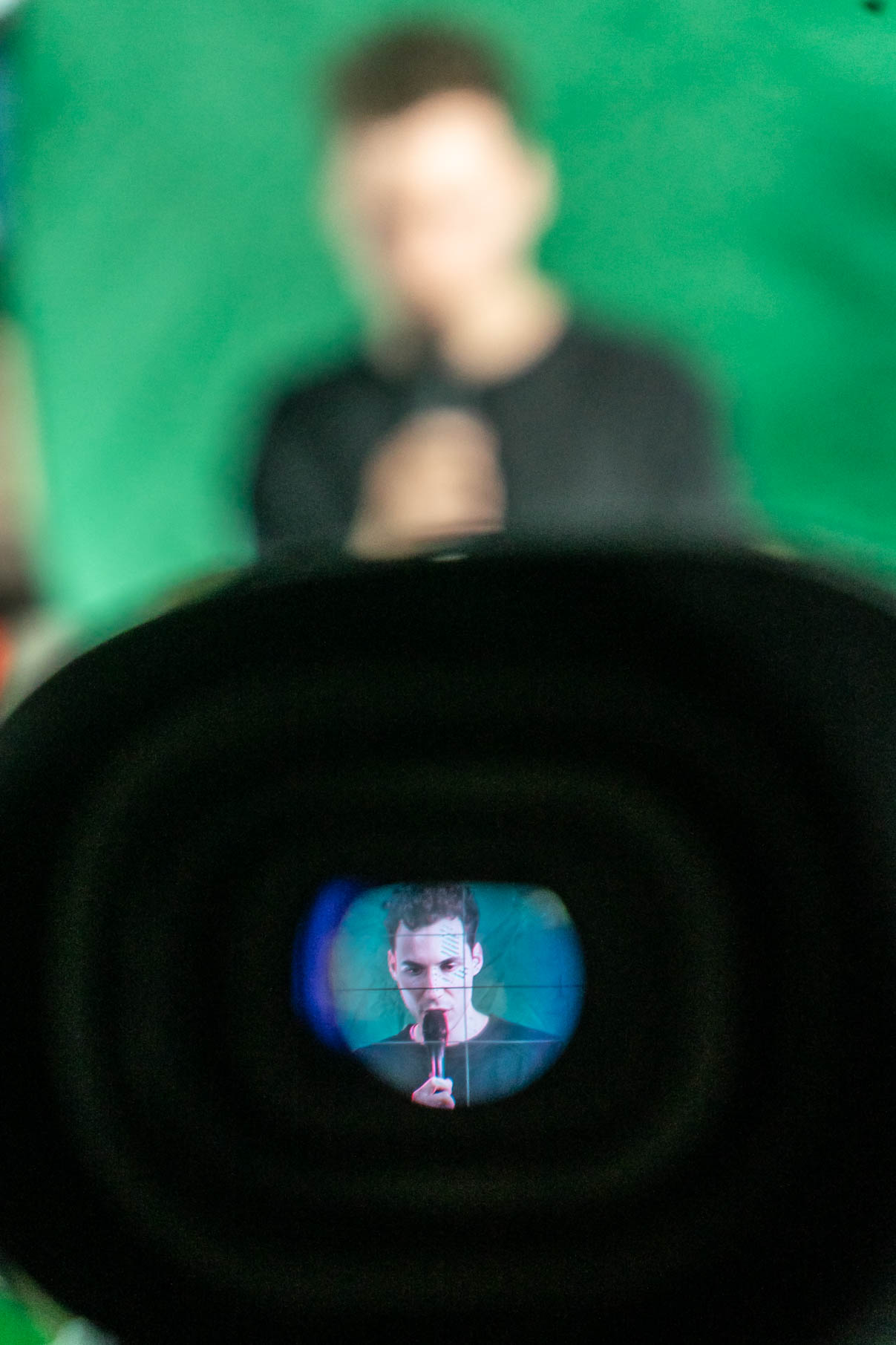
Maks Valenčič, lecture. Photo: Urša Rahne / Aksioma.
For Valenčič the psychotic is intriguing because of their outsider perspective on reality. By negating the symbolic castration or the name-of-the-father the psychotic can develop an unrestricted grasp on desire, prolonging their stay in the dreamworld unbound by the rules of authority.[23] In this position, the true form of schizo–analysis can be reached by not just grasping matter at a current point of a function but seeing the entirety of the process. If a psychotic is a dreaming mesa–optimiser,[24] then a similar idea can be seen in cute accelerationism, looking at cuteness as means to unfold the digital latent spaces and extrapolate the internet’s unconsciousness.[25] Can’t an AI dream? Left to ponder these questions, we were welcomed by DJ Final forms intermission.
⋆✴︎˚。⋆⋆✴︎˚。⋆
⋆✴︎˚。⋆⋆✴︎˚。⋆
In his lecture on expressibility, Kostanjevec first walked us through a short historicization of expressibility’s conceptual models. With a few concrete examples, such as the limits of Euclidean mathematics, the arbitrariness of the modern voting system, or the confines of computational ability with the Turing machine, we can see how this is a very important philosophical and technical foundation. Only by showcasing how a certain knowledge system can fundamentally limit the conceptual imaginary can we start to imagine where our next steps in research should be taken. Expressibility thus isn’t just a problem of mathematics or philosophy but a very foundational and broadly applicable issue. It conditions how our social and economic institutions work, in what ways our science is conducted and taught as well as what kind of art we make.
In the final part of the talk, Kostanjevec touched upon where we can currently detect the uncharted territories of expression. With rapid technological advances in the fields of neural network research and large language models, we can also observe a paradigmatic shift. These new frameworks disregard old knowledge models based on qualitative explanations or the wit and luck of a researcher and instead base their predictions on the gradual optimization results of a statistical analysis based on big data models.[26]
Enlarge
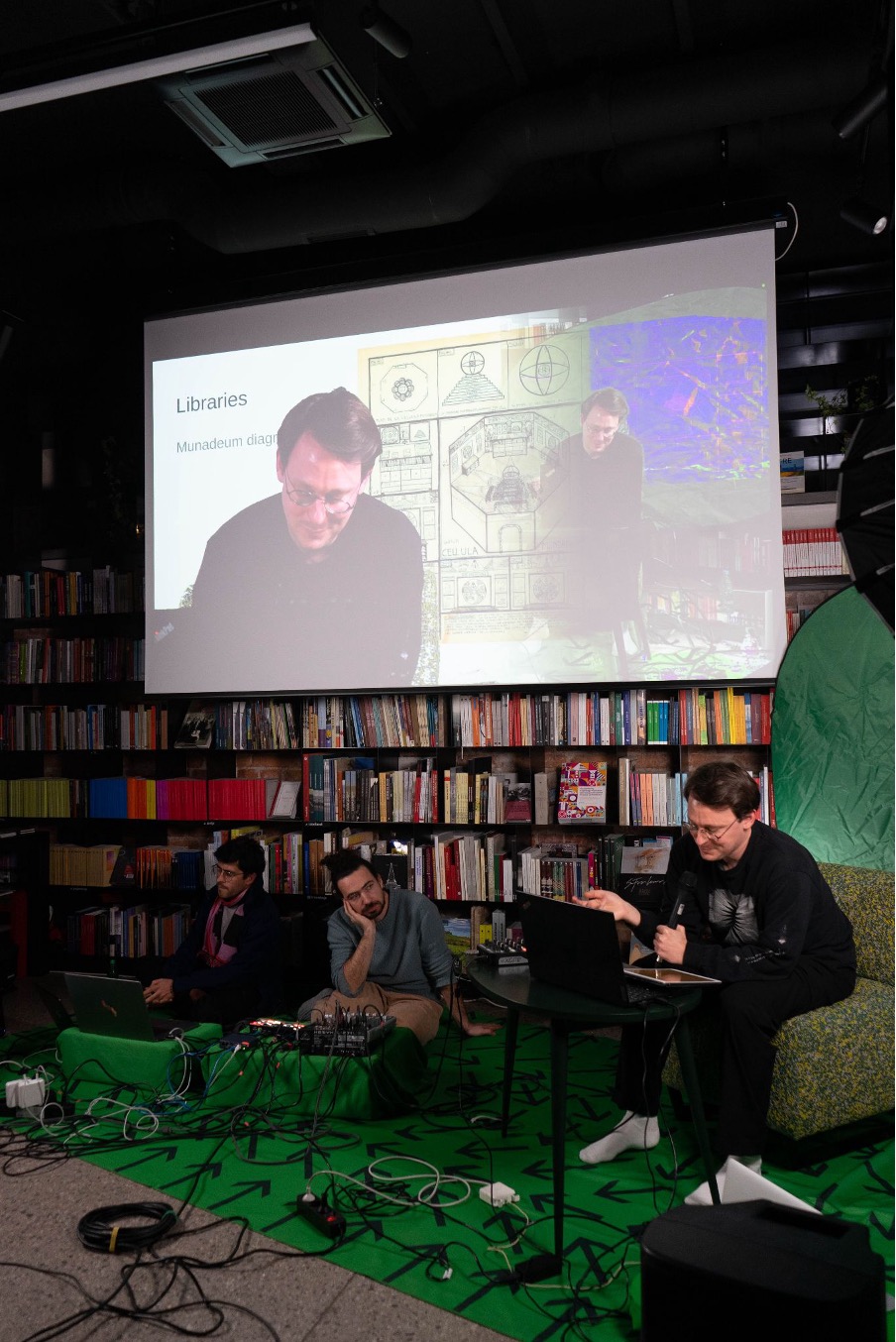
Jan Kostanjevec, lecture. Photo: Urša Rahne / Aksioma.
We can also see that these quick and exciting developments are a consequence of a series of sedimented discoveries over the past years. The Index Thomisticus, Key Words in Context Algorithm, and the implementation of the vector space model,[27] were all small steps toward breaking the current imaginary of expressibility. We can already see these models break through what we thought was possible before as they mine scientific research and capture the unexplored latent spaces or expose entirely new connections or relationships that were buried under a fine layer statistical intangibility that just had to be dredged off.[28] Paraphrasing Kostanjevec in the final moments of his talk: wouldn’t it be a shame if we were just one small perspective shift or formal tweak away from a great idea?
*ੈ✩‧₊˚༺☆༻*ੈ✩‧₊˚
Through the practice of exploring different perspectives on reality-bending, virtuality and the role we play in digital space, as well as mediality or reaching the limits of a model, we were able to gather quite a few thoughts and ideas that we can add to our cognitive toolbox. If both physical and digital reality are rapidly crumbling and disintegrating around us, we must have a conceptual framework with which to first grasp it and then try to intervene. The showcased projects provide us with some inspiration, from recalibrating the power structures through unintended use of platforms, rediscovering reality through role play, finding new ways of interaction through countergaming, or using art as a comment on sovereignty and arbitrary data and state division. Channeling non-conventional viewpoints and concepts such as decay, fiction or psychosis might just be the answer to our ability to cope and slowly instill seeds of radical change.
✩₊˚.⋆☾⋆⁺₊✧₊⁺⋆☾⋆.˚₊✩
Lea Sande is a student of the sociology of culture programme at the Faculty of Arts, University of Ljubljana. She works as a journalist at the alternative communal radio station Radio Študent where she does her writing under the department for culture and humanities. In her work she reports on new technologies and their implementation in culture, writes reviews and contextualises newly released works of theory and critically analyses often discarded forms of media such as comic books and video games.
––––––– ⋆⋅☆⋅⋆ ─ ⋆⋅☆⋅⋆ ─ ⋆⋅☆⋅⋆ ─⋆References⋆─ ⋆⋅☆⋅⋆ ─ ⋆⋅☆⋅⋆ ─ ⋆⋅☆⋅⋆ –––––––
[1] G. Lovink, Extinction Internet (2020).
[2] M. Read, Hawk Tuah and the Zynternet (2024): https://maxread.substack.com/p/hawk-tuah-and-the-zynternet
[3] I. Pestellini Laparelli & E. Petrillo, Squatting the Digital: Beyond Tech Bros (2021): https://2050.plus/academic/squatting-the-digital-beyond-tech-bros/
[4] G. D’alisa, F. Demaria & G. Kallis, Degrowth A vocabulary for a new paradigm, (2014).
[5] A. Bucknell, All the world’s polygons, (2024): https://www.sum.si/journal-articles/all-the-worlds-polygons
[6] A. K. Kar, Bio inspired computing – A review of algorithms and scope of applications (2016): https://doi.org/10.1016/j.eswa.2016.04.018
[7] Omsk Social Club, The Story so Far & Omsk Social Club as a Conceptual Framework, (2023): https://www.sum.si/journal-articles/the-story-so-far-omsk-social-club-as-a-conceptual-framework
[8] L. Feireiss & F. Hadler, Weak Signals New Narratives in Art and Technology, (2023).
[9] V. Tanni, Exit Reality, Vaporwave, backrooms, weirdcore and other landscapes beyond the threshold, (2024).
[10] Aemmonia & Xleepyfey. The Xenofeminist hauntology, (2024). in Dialogues on CoreCore & the Contemporary Online Avant-Garde by 0nty & Smith.
[11] J. Citerella, Politigram & the Post – left, (2022): https://joshuacitarella.substack.com/p/politigram-and-the-post-left
[12] M. Kagen, Wandering games, (2022).
[13] A. R. Galloway, Gaming: Essays on Algorithmic Culture, (2006).
[14] H. Steyerl, In Free Fall: A Thought Experiment on Vertical Perspective, (2014): https://www.e-flux.com/journal/24/67860/in-free-fall-a-thought-experiment-on-vertical-perspective/
[15] M. McLuhan, Understanding media: the extensions of man, (1964).
[16] A. Leroi-Gourhan, Gesture & Speech, (2009).
[17] L. Russell, Glitch Feminism: A Manifesto, (2020).
[18] B. H. Bratton, The Black Stack. (2014): https://www.e-flux.com/journal/53/59883/the-black-stack/
[19] B. H. Bratton, The stack: on software and sovereignty, (2015).
[20] J. Bridle, State to stateless machines: a trajectory, (2019).
[21] Xenogothic, Cute/Acc’s Postmodern Princedoms, (2024): http://web.archive.org/web/20240711200152/https://xenogothic.com/2024/02/02/cute-accs-postmodern-princedoms/
[22] M. Valenčič, Editorial, (2021): https://www.sum.si/journal-articles/editorial-2
[23] M. Valenčič, Psychotic Accelerationisml, (2023): https://www.sum.si/journal-articles/psychotic-accelerationism
[24] E. Hubiger, et al. Risks from Learned Optimization in Advanced Machine Learning Systems, (2021).
[25] A. Ireland, & M. Kronic, Cute Accelerationism, (2024)
[26] J. Kostanjevec, Association of Explanation and Prediction, (2017): https://www.sum.si/uploads/downloads/SUM_7_double.pdf
[27] B. Rieder, Engines of Order : A Mechanology of Algorithmic Techniques, (2020).
[28] V. Tshitoyan, Dagdelen, L. Weston, et al. »Unsupervised word embeddings capture latent knowledge from materials science literature, (2019).

